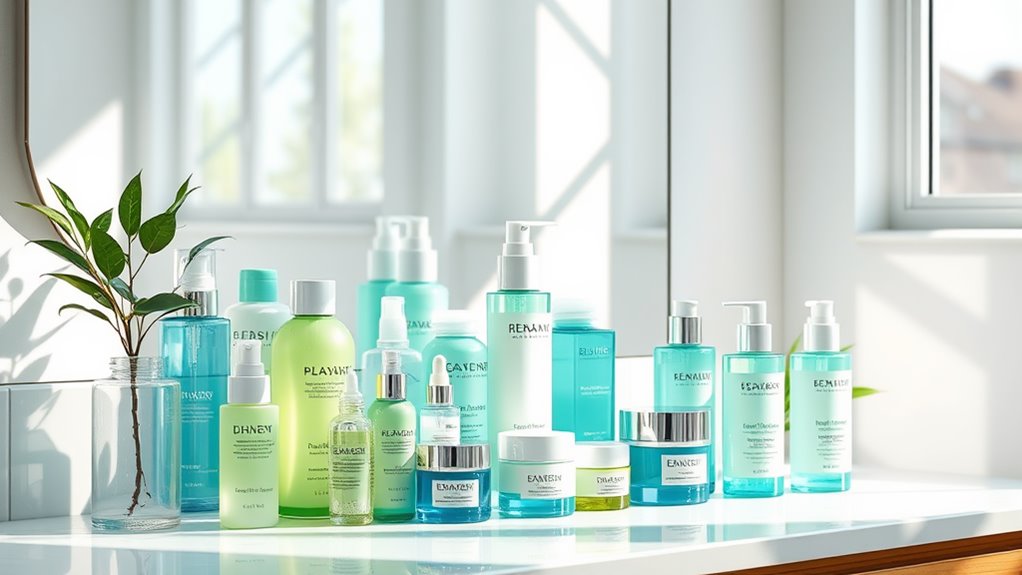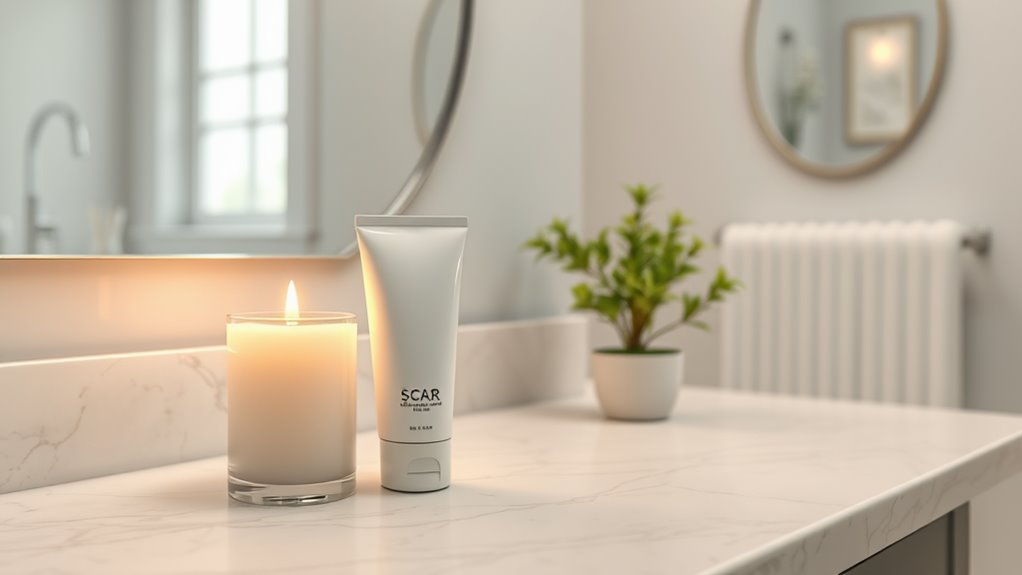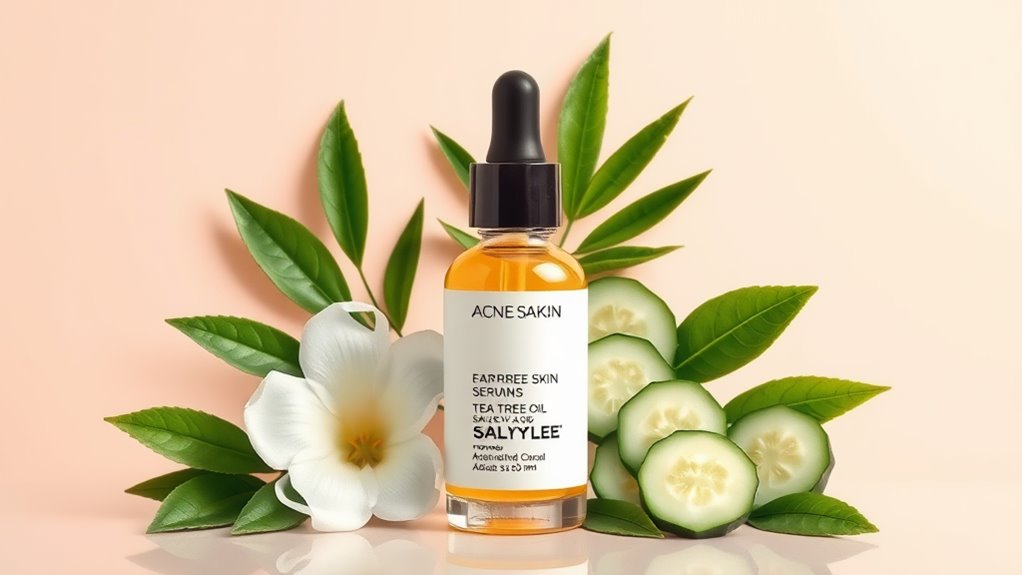3 Rules Everyone With Oily Skin Should Follow
If you have oily skin, you know the struggle of managing shine and breakouts. Following a few key rules can make a significant difference in your skincare routine. First, cleansing your skin twice daily is vital. Next, choosing oil-free and non-comedogenic products can help keep your pores clear. Finally, establishing a consistent skincare regimen is essential for maintaining balance. Wondering how these steps can transform your skin? Let’s explore each rule in detail.
Key Takeaways
- Cleanse your skin twice daily with a gentle, oil-free cleanser to effectively manage excess oil and impurities.
- Use non-comedogenic and lightweight products to prevent clogged pores and maintain a fresh complexion.
- Incorporate a consistent skincare routine, including toner and oil-free moisturizer, for balanced hydration.
- Exfoliate weekly with a suitable exfoliator to remove dead skin cells and prevent breakouts.
- Stay committed to your routine and adjust products as needed to enhance effectiveness and achieve matte skin.
Cleanse Your Skin Twice Daily
When you’re dealing with oily skin, cleansing twice daily is essential to keep excess oil and impurities at bay.
Start your day with a gentle cleanser that targets oil without stripping your skin’s natural moisture. This sets the stage for a fresh complexion and prevents clogged pores.
In the evening, wash your face again to remove the day’s buildup of dirt, sweat, and makeup. Don’t rush; spend a minute massaging the cleanser into your skin for effective results.
Remember, consistency is key, so make this cleansing routine part of your daily regimen.
Incorporating these oily skin tips will help you maintain balance, minimize shine, and promote a healthier complexion.
Mastering this step is fundamental for achieving your skincare goals.
Choose Oil-Free and Non-Comedogenic Products
Choosing oil-free and non-comedogenic products is crucial for managing oily skin effectively.
These products help prevent clogged pores and reduce excess shine, allowing your skin to breathe.
Here are three key tips to keep in mind:
-
Read Labels: Always check for “oil-free” and “non-comedogenic” on the packaging. This guarantees the product won’t block your pores.
-
Moisturize Wisely: Even oily skin needs hydration. Opt for lightweight, gel-based moisturizers that won’t add extra oil.
-
Select Makeup Carefully: Use makeup formulated for oily skin, such as powder foundations or mineral-based products, to keep your complexion fresh throughout the day.
Establish a Consistent Skincare Routine
To effectively manage oily skin, establishing a consistent skincare routine can make all the difference. Following a structured regimen helps control excess oil and prevents breakouts. Start with a gentle cleanser, followed by a toner to balance your skin. Then, apply an oil-free moisturizer to hydrate without clogging pores. Incorporating specific ingredients such as scientifically-proven methods can further enhance your results.
Here’s a simple routine to follow:
| Morning Routine | Evening Routine | Weekly Treatment |
|---|---|---|
| Cleanser | Cleanser | Exfoliator |
| Toner | Toner | Clay Mask |
| Oil-Free Moisturizer | Oil-Free Moisturizer | Spot Treatment |
Stick to this routine daily, and tweak products as needed. Consistency is key, so keep at it to achieve the flawless, matte skin you desire!
Frequently Asked Questions
Can Diet Affect the Oiliness of My Skin?
Absolutely, your diet can influence your skin’s oiliness. When you consume high-glycemic foods or dairy, it may trigger excess oil production. Focus on a balanced diet rich in antioxidants and healthy fats to maintain clearer skin.
How Often Should I Exfoliate Oily Skin?
You should exfoliate oily skin two to three times a week. This frequency helps remove dead skin cells, unclogs pores, and reduces excess oil, but don’t overdo it to avoid irritation and dryness.
Are There Specific Ingredients to Avoid for Oily Skin?
When managing oily skin, avoid heavy oils, alcohol, and irritating fragrances. These ingredients can exacerbate oiliness and cause breakouts. Instead, focus on lightweight, non-comedogenic products that balance and nourish your skin effectively.
Is Sunscreen Necessary for Oily Skin Types?
Yes, sunscreen’s essential for oily skin types. It protects against UV damage without causing excess oil. Look for lightweight, non-comedogenic formulas that’ll keep your skin safe and looking fresh throughout the day.
Can Hormonal Changes Increase Oil Production in My Skin?
Yes, hormonal changes can definitely increase oil production in your skin. Fluctuations during puberty, menstruation, or hormonal treatments can trigger your sebaceous glands, leading to excess oiliness and potentially causing breakouts.
Conclusion
By following these three essential rules, you can effectively manage oily skin and achieve a healthier complexion. Cleansing twice daily, choosing oil-free and non-comedogenic products, and sticking to a consistent skincare routine will help balance your skin’s oil production. Remember, the right approach can make all the difference in keeping your skin clear and matte. Embrace these practices, and you’ll be on your way to enjoying a more radiant, confident you!





